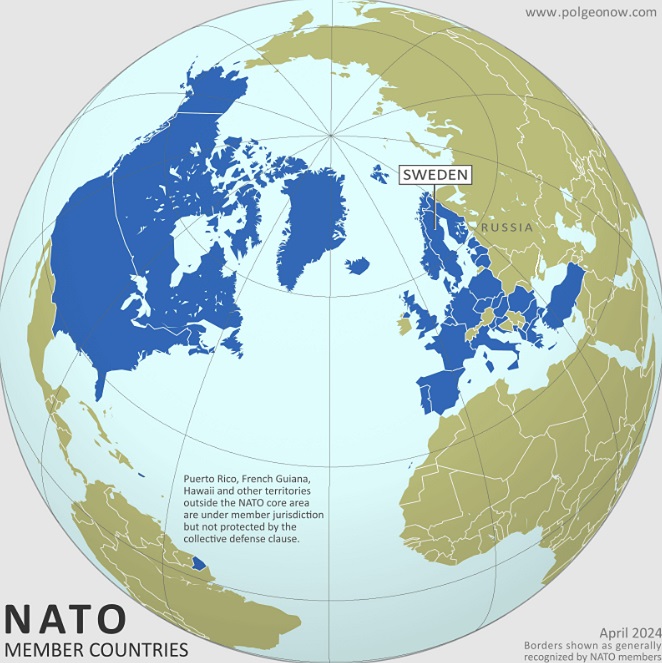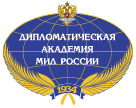
US presidents have always been skeptical of having to protect Europe, but Trump takes it to a new level. NATO is currently being tested by four convergent crises that run deeper than Trump’s disruptive effects, writes Hal Brands, a Bloomberg Opinion columnist and the Henry Kissinger Distinguished Professor at Johns Hopkins University’s School of Advanced International Studies.
Why is the globe’s greatest military alliance so often in crisis? President Donald Trump’s reelection last November, and Vice President JD Vance’s deliberately insulting speech in Munich in February, cast the North Atlantic Treaty Organization into grave anxiety. But it’s hardly the first time the alliance has been at risk of falling apart.
NATO remade Europe, and the world, in the decades after its founding in 1949, by bringing peace and security to a continent that had repeatedly touched off global wars. Yet from the beginning, NATO has been a contentious coalition: Its members have been at each other’s throats even as they have also locked arms.
Yes, Trump sometimes seems downright hostile to NATO, but previous US leaders threatened to leave the alliance or simply looked forward to the day when Europe could take care of itself. NATO’s history is an odd combination of epic, history-changing achievements and existential crises.
But NATO’s current crisis isn’t solely Trump’s doing. And if his presidency stands a real chance of rupturing the alliance, it could, ironically, still renew it instead. For decades, the flip side of crisis has been resilience. NATO will need every bit of that resilience to meet its current challenge — and avoid a breakup that could be disastrous for Europe, America and the wider world.
NATO is America’s gold-standard alliance, but it wasn’t America’s idea. The US had no tradition of peacetime security commitments in Europe before World War II. It had no intention of making them after that war ended. But Washington ultimately stayed, and led this enduring alliance, because there was no other solution to the strategic problem of anarchy in the Old World.
Europe had destroyed itself twice in a generation. Both conflicts sprawled across oceans and ensnared the US. After World War II, old antagonisms lingered and new radicalisms threatened. The French feared German resurgence; the Soviet Union dominated Eastern Europe with ample opportunities to expand to the west.
Only the US had the power to secure Western Europe against external threats, while also smothering the internal animosities that might again set things alight. So the Truman administration agreed to join an alliance proposed by its weaker members — whose goal, NATO’s first secretary general quipped, was to keep the Americans in, the Germans down and the Soviets out.
NATO’s fractiousness might as well be written into its charter. The organization spans an ocean and two continents; it stretches from the Arctic to the Mediterranean. Its members — 12 initially, 32 today — have tremendously diverse interests, histories, geographies and levels of power.
NATO includes a superpower and microstates, prosperous and comparatively poor societies, countries with tremendous physical security and states that have repeatedly been invaded. At its start, it featured both dictatorships and democracies. Its members included fading colonial empires as well a leader that styled itself an opponent of colonialism despite building a mostly informal empire of its own. Add in the inevitable personality clashes — between French President Charles de Gaulle and US President Lyndon Johnson, between Trump and German Chancellor Angela Merkel, and other toxic twosomes — and it’s no wonder that internal fights are frequent affairs.
NATO is currently being tested by four convergent crises that run deeper than Trump’s disruptive effects.
First, since 2022, NATO has responded by supporting Ukraine’s fight for survival; the alliance expanded to include Finland and Sweden, and its members ramped up spending on defense. But European defense chiefs fear that if Moscow wins in Ukraine, it might test NATO militarily, perhaps in Baltic states that are half-ringed by Russian power.
Second, a crisis of preparation. After the Cold War, NATO grew more geographically ambitious: It intervened “out of area,” in locales from the Balkans to Afghanistan. But it became less militarily capable, thanks to a quarter-century peace dividend. By the mid-2010s, German troops were, ridiculously, exercising with broomsticks in place of guns.
Third, a crisis of shifting priorities. Europe was Washington’s top priority in the Cold War because it was the crucial swing region, economically and militarily, in the Soviet American contest. Since then, however, the world’s center of economic gravity has moved to the east. The primary military danger zone is not the Fulda Gap but the Taiwan Strait.
American attention is shifting, fitfully but inevitably, to the Pacific. “Asia Firsters” are asking whether the US should still underwrite European stability in an Indo-Pacific age.
Finally, there is the crisis of credibility. Europeans have always wondered whether the US will be there when it matters. How could those fears not be turbocharged in the age of Trump?
Trump isn’t original in questioning the value of NATO. But Europe never had to deal with a US president who threatened to violently seize territory from allies, or so gleefully threatened to abandon those allies if they are attacked. Economic disputes are normal, but no American president has so wantonly jeopardized global prosperity — or seemed so much happier in the company of aggressive autocrats than longtime democratic friends.
For some NATO skeptics, that outcome wouldn’t be so bad: They hope that a US departure might force Europe to get its act together and become an equal partner in defense of the democratic world. In reality, a Europe that no longer enjoys US protection wouldn’t be as accommodating of US interests, on issues from dollar dominance to the security of the Western Pacific. And the reason that US officials never walked away from the alliance, is that doing so could be disastrous for everyone involved.
In the near term, a transatlantic split would rip the guts out of NATO. It would leave European countries, even ones now arming themselves with urgency, struggling to project power to the edge of the continent and counter the Russian threat. It would deprive Europe of the patron whose support produces firmness against autocratic pressure — and whose leadership helps reconcile divergent interests into a coherent transatlantic agenda. The result, most likely, would be a weaker, more fractured continent that becomes a source of debility for the democratic world.
Indeed, there’s a reason that strategic autonomy — the idea that Europe can do without the US — is taken more seriously in the sheltered western part of the continent than in Poland, Finland and other countries in the imperiled north and east. The European defense industrial base is feeble and splintered. The continent can’t quickly replace NATO’s American-led command structures. Nor can the French or British take over America’s nuclear responsibilities: They lack the big, flexible arsenals, the extensive forward troop deployments, and the damage-limitation capabilities that have typically been required to make extended deterrence work.
Peace isn’t Europe’s natural condition: America’s presence transformed a tortured continent. American absence could rip the crucial safeguards away.
After a US departure, political and economic rivalries might take on menacing undertones.
The illiberalism and hypernationalism of earlier eras, never fully buried, could force their way to the surface. Border disputes and revisionist grievances might intensify. As arms races resume and nuclear proliferation becomes more common, a conflict-prone Europe could again export instability and violence to the world.
The fact that this scenario seems unthinkable today only reveals how dramatically Europe changed under US leadership. It could change dramatically, for the worse, in a post-American age.
So is NATO’s long run finally over? Or can the alliance be renewed once more? The answer has epic global implications, and it will hinge heavily on the leadership of Donald Trump.
read more in our Telegram-channel https://t.me/The_International_Affairs

 11:30 27.06.2025 •
11:30 27.06.2025 •






















